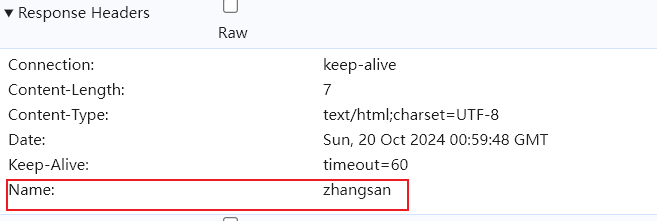文章目录
- 处理输入输出
- 常用数据结构
- 数学知识
- 数论基础
- 质数和合数
- 因数/约数
- 互为质数
- 阶乘
- 排列与组合
- 排序
- 字典序
- Comparator接口
处理输入输出
Scanner 类可以读取多种类型的数据,包括:
- nextInt():读取整数。
- nextDouble():读取双精度浮点数。
- nextLine():读取整行字符串(包括空格)。
- next():读取下一个完整的单词。
常用数据结构
数学知识
数论基础
质数和合数
只有两个正因数(1和它本身)的自然数称为质数。比1大但不是质数的数称为合数。1和0既非质数也非合数。
public static boolean isPrimeNumber(int a){
// 0 和 1 既不是质数和不是合数
if (a < 2 ){
return false;
}
for (int i = 2; i < a; i++) {
if (a % i == 0) {
return false;
}
}
return true;
}
第二种方式,由于a = b * c,那么b,c一定小于a的平方根;可以说明,a的其他因数的平方一定小于a.
public static boolean isPrimeNumber(int a){
//0和1既不是质数和不是合数
if (a < 2 ){
return false;
}
boolean b = true;
for (int i = 2; i*i < a; i++) {
if (a % i == 0){
return false;
}
}
return true;
}
因数/约数
因数是指能够整除一个整数的数。换句话说,如果一个整数 𝑎 被另一个整数 𝑏 除,且结果是一个整数(没有余数),那么 𝑏 就是 𝑎 的因数。
互为质数
互质(又称为 质数 或 互为质数)是指两个或多个整数之间的一种关系:如果它们的最大公约数(GCD)是 1,则称这些整数互质。
判断2个数互为质数: 辗转相除法
可以通过求最大公约数是否为1判断两数互为质数
public static boolean isPrimeNumber(int a ,int b){
// 辗转相除法
while (b != 0) {
int temp = a % b;
a = b;
b = temp;
}
return a == 1 ? true: false;
}
判断N个数互为质数
根据互为质数可以得到,质数的最大公约数是一,那么用哈希表保存各个因数的累计值,除了1以外的因数,其他存在大于1的数,则不互为质数。
public static boolean isPrimeNumberAll(int[] nums) {
HashSet<Integer> set = new HashSet<>();
for (int num : nums) {
if (num < 2) {
return false;
}
for (int i = 2; i * i <= num; i++) {
if (num % i == 0 && set.contains(i)) {
return false;
} else {
set.add(i);
}
}
}
return true;
}
根据互质数的定义,可总结出一些规律,利用这些规律能迅速判断一组数是否互质。
(1)两个不相同的质数一定是互质数。如:7和11、17和31是互质数。
(2)两个连续的自然数一定是互质数。如:4和5、13和14是互质数。
(3)相邻的两个奇数一定是互质数。如:5和7、75和77是互质数。
(4)1和其他所有的自然数一定是互质数。如:1和4、1和13是互质数。
(5)两个数中的较大一个是质数,这两个数一定是互质数。如:3和19、16和97是互质数。
(6)两个数中的较小一个是质数,而较大数是合数且不是较小数的倍数,这两个数一定是互质数。如:2和15、7和54是互质数。
(7)较大数比较小数的2倍多1或少1,这两个数一定是互质数。如:13和27、13和25是互质数。
阶乘
阶乘是一个数学概念,通常用符号 𝑛! 表示,代表一个正整数 𝑛 的阶乘。阶乘的定义是将所有正整数从 1 乘到 𝑛 的结果。阶乘只适用于非负整数。
n!=n×(n−1)×(n−2)×…×3×2×1
特殊情况:0!=1(这是一个约定,方便数学运算)
排列与组合
排列是指从 𝑛 个不同元素中选取 𝑟 个元素的不同排列方式。排列考虑了元素的顺序。

n! 表示 𝑛 的阶乘,定义为 𝑛×(𝑛−1) x (𝑛−2) x… x 2x1。𝑟 是选取的元素个数。
组合是指从 𝑛 个不同元素中选取 𝑟 个元素的不同组合方式。组合不考虑元素的顺序。

求排列和组合
如果只需要求数量,可以直接通过代码计算公式即可:
public class PermutationCombination {
// 计算阶乘
public static long factorial(int n) {
if (n == 0) return 1;
long result = 1;
for (int i = 1; i <= n; i++) {
result *= i;
}
return result;
}
// 计算排列
public static long permutation(int n, int r) {
return factorial(n) / factorial(n - r);
}
// 计算组合
public static long combination(int n, int r) {
return factorial(n) / (factorial(r) * factorial(n - r));
}
public static void main(String[] args) {
int n = 5; // 总元素个数
int r = 3; // 选取元素个数
long permResult = permutation(n, r);
long combResult = combination(n, r);
System.out.println("P(" + n + ", " + r + ") = " + permResult);
System.out.println("C(" + n + ", " + r + ") = " + combResult);
}
}
如果要求所有的排列或者组合,参考以下程序:
import java.util.ArrayList;
import java.util.List;
public class PermutationAndCombination {
public static void main(String[] args) {
// 生成所有排列
int[] nums = {1, 2, 3}; // 输入数组
System.out.println("All permutations:");
List<List<Integer>> permutations = generatePermutations(nums);
for (List<Integer> perm : permutations) {
System.out.println(perm);
}
// 生成所有组合
int n = 5; // 总元素个数
int r = 3; // 选取元素个数
System.out.println("\nAll combinations:");
List<List<Integer>> combinations = generateCombinations(n, r);
for (List<Integer> comb : combinations) {
System.out.println(comb);
}
}
// 生成所有排列
public static List<List<Integer>> generatePermutations(int[] nums) {
List<List<Integer>> result = new ArrayList<>();
backtrackPermutations(result, new ArrayList<>(), nums);
return result;
}
private static void backtrackPermutations(List<List<Integer>> result, List<Integer> tempList, int[] nums) {
if (tempList.size() == nums.length) {
result.add(new ArrayList<>(tempList));
} else {
for (int i = 0; i < nums.length; i++) {
if (tempList.contains(nums[i])) continue; // 元素已存在,跳过
tempList.add(nums[i]);
backtrackPermutations(result, tempList, nums);
tempList.remove(tempList.size() - 1); // 回溯
}
}
}
// 生成所有组合
public static List<List<Integer>> generateCombinations(int n, int r) {
List<List<Integer>> result = new ArrayList<>();
backtrackCombinations(result, new ArrayList<>(), 1, n, r);
return result;
}
private static void backtrackCombinations(List<List<Integer>> result, List<Integer> tempList, int start, int n, int r) {
if (tempList.size() == r) {
result.add(new ArrayList<>(tempList));
} else {
for (int i = start; i <= n; i++) {
tempList.add(i);
backtrackCombinations(result, tempList, i + 1, n, r);
tempList.remove(tempList.size() - 1); // 回溯
}
}
}
}
排序
字典序
字典序(又称字典排列、字典顺序)是一种将字符串(或其他序列)按字母(或元素)顺序排列的方式,类似于在字典中查找单词的顺序。字典序是基于字符的 Unicode 值进行比较的。
在字典序中,字符串的比较通常遵循以下原则:
- 逐字符比较:从字符串的第一个字符开始,逐个字符进行比较。
- 字符顺序:如果两个字符串的第一个字符不同,则较小的字符对应的字符串在前。如果第一个字符相同,则比较第二个字符,以此类推。
- 长度比较:如果一个字符串是另一个字符串的前缀,则较短的字符串排在前面。例如,“apple” 在字典序中排在 “applepie” 之前。
许多编程语言提供了内置的字符串比较功能,通常可以直接使用这些功能来实现字典序的排序。例如,在 Java 中,可以使用 Arrays.sort() 方法对字符串数组进行字典序排序。
String[] words = {"apple", "banana", "apricot", "grape"};
// 按字典序排序
Arrays.sort(words);
两个字符串之间比较:
String a = "apple";
String b = "banana";
// 直接通过compareTo进行比较就是字典序
a.compareTo(b)
Comparator接口
int compare(T o1, T o2):比较两个对象,返回负整数、零或正整数,以指示第一个对象是否小于、等于或大于第二个对象。
compare(T o1, T o2) 方法的返回值决定了排序的顺序,默认是按升序排列的:
- 返回负整数:表示 o1 小于 o2,在排序中 o1 会排在 o2 前面。
- 返回零:表示 o1 等于 o2,它们的位置不变。
- 返回正整数:表示 o1 大于 o2,在排序中 o1 会排在 o2 后面。



















